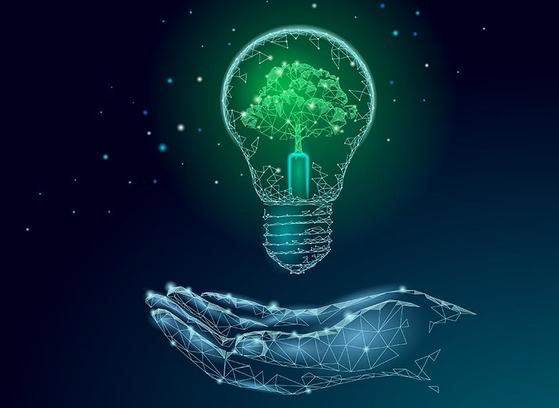 Thinking back to MWC 2016…
Thinking back to MWC 2016…
In my personal view, what made this year's show quite interesting is the fact that it really started to clear out the mist around 5G by allowing a glimpse into the future while still trying to fully ensure that we are taking advantage of everything we have and can do now. Or, in other words, a lot of talk on 5G is that it is”already happening” and is of early “deployments,” but at the same time there was a lot of discussion on getting more concrete with what should and can be done before 5G technically happens, and how to make strong economic and business sense of it.
In short, the first 3GPP 5G release is expected in 2018, with its first deployments in 2020. However, the first trial network has been promised during the 2018 Olympics by SKT. Until then, we will continue to see more and more mmW test beds for 5G air interfaces beyond 10GHz and collaborative trials between operators and vendors. The most noticeable one at MWC was showcased at the E//, QC, Docomo, and Nokia booths: their beamforming effect at 15GHz with 100 MHz bandwidth for in-building and outdoor. More trials are expected from Vzw and AT&T at 15 and 28GHz, as well as at higher frequencies (34, 37 and 39GHz) with 200 MHz bandwidth once the FCC approves the fillings. Similar trials are expected to continue from Asia Pacific, with SKT leading with their 5G platform at both below and above 6GHz. In addition, massive MIMO beyond 128×128 and higher modulation schemes (256QAM) are evaluated at both below and above 6GHz. On the 5G device landscape, SKT showcased their prototype in collaboration with Intel; the device showed up to a 1.5Gbps transmission bit rate from the base system.
Because 3GPP launched the standardized process in the fall of 2015, several things are beginning to crystallize. It is clear now that 5G is going to support three main use cases: extreme mobile broadband, mission critical IoT and massive M2M, each with different requirements of speed, latency, security, and reliability, which implies the need for network slicing. In addition, all of these require not only the new air interface for spectrum beyond 6GHz, but also the redefined architecture with SDN and cloud operating NFVs.
Huawei was the party making the point that in parallel with all the 5G centric activities, and in preparation for 5G, their focus is on what can be done now, such as increased connectivity with NBA-IoT to massive M2M with low power and unique coverage shifting towards demand-driven verticals (e.g. transportation, health, education, power grid, city security) requiring various bandwidths, connectivity types and latency values.
The whole point of the show, however, was that not only does connectivity lie at the core of 5G but rather the fact that mobile is about everything: connectivity, identities, utilities, the Internet, money, automotive, health, commerce, education…Everything fast, secure, and reliable towards something that we might call “the gigabit society,” as the CEO of VDf put it: a fast, secure and reliable society that will redefine enterprises' business models, efficiency and scalability, as well as how not only we the users will perceive the services (e.g. multi-screen, virtual reality), but also how the machines will interact between themselves and with us within the IoT ecosystem.
In all this very exciting noise, some high-pitched tones could be heard, if one really wanted to open his ears…Big data platforms and cognitive computing, automated customer analytics and user-centric expert systems for root-cause analysis…basically the sought after common ground of the two worlds: telecommunication and computing. The reason I noticed these tones is because although they seem to be a commodity, and in actuality they should be as there is no other choice in a 5G era, they actually are not yet. Presentations and demonstrations were either more around prototypes or partial solutions rather than working solutions. Reading between the lines, a lot of challenges were unveiled… I guess more will come next year.
However, noticeable tones on cognitive computing came from the Watson Group of IBM, who discussed their Outthink prototype solution focused on leveraging the massive unstructured network data to find useful information on users (humans and machines) from the network noise based on machine learning. Also, Qualcomm's Zeroth platform, designed with the vision of being able to support algorithms fitted for low power and less computing power, is aimed to help enable artificial intelligence on the edge (e.g. phones, drones, IoT devices) for real-time perception, reasoning, and taking action — all key for applications like automated driving when performing analytics in real-time is crucial. Artificial intelligence will also benefit the future (5G) smart phones that will need to be able to contextualize and personalize for its user and their interaction with the network in order to support the 5G context aware QoE.
When it comes to automated customer analytics and user-centric expert systems, Ericsson's prototype demonstrations on predictive troubleshooting, with their universal expert solution with a variety of features, such as CRM and CEM automated analysis, video delivery pattern recognition for optimization and other services (e.g. VoLTE, ViLTE), stand out.
So, I would conclude that MWC 2016 was governed by a myriad of clearly feasible, as well as more challenging, technical solutions towards “the gigabit society”. Although this is all very exciting, if you ask me the clear winners of the event I would say that they are the connected cars and the self-driving cars. A considerable number of partnerships between operators and car manufacturers merged their innovation to make the automotive IoT vertical a reality that we as users are already experiencing today. But maybe more impressive is how this innovation goes fast towards self-driving cars such as the luxurious Mercedes Benz prototype.









